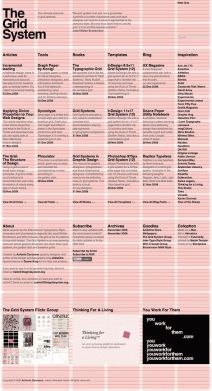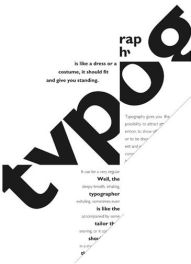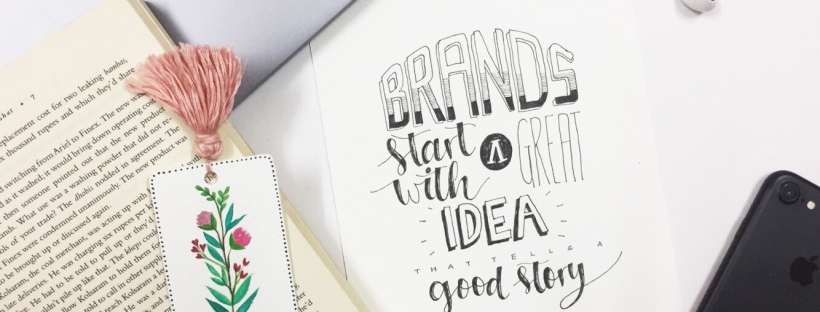Why are the grid lines thrown over your canvas, are so important to your design project?
Every designer has their own answer, but the basic idea behind those grid lines is to make your layout neat, clean, organized and structured so that it is less time consuming and troublesome for your design projects.
Whether you work on web or on a print media, you need to know the reasons why grid system is important for your designs and how does it help you achieve your goals.
Below are some of the reasons why grid is an important tool in every designers toolbox:
- Helps you Organize your content: This is one of an important subject where using grid helps you keep your your design aligned, structured, neat and clean. This is the main job description of the grid system to keep the design aligned and organized. Using the grid lines you’re forming a structure for yourself which helps you for your future design project in its completion. Build your rough ideas using the grid lines with the help of imagery, typography, graphics, etc.

- Helps Balancing the Design: Balance is one of the most important principle of design, The beauty of the grid system helps keep the design consistent and even. It works both the ways – symmetrical layout and asymmetrical layout. It makes it easier to judge as in which part of your design is overpowering the other.

- Helps making Job Quicker: In the world, where we’re always wanting to get things done easier and quicker, grids can help greatly to speed up and improve your design layouts. The grid lines act here as a guide to place your elements, position and at the same time scale them, instead of randomly placing your elements, consuming more of our time. Think grid as the foundation to your layout, its one of the first thing you lay down and then build upon your story.
- Helps to make it easier for Team: At work, we are not the solo owner of a particular project as a whole. We believe in team work and hence we work together on projects. During certain period of time, due to time constraints, we do divide our work among the fellow colleagues. In this situation, grids play a very crucial role. And that is the only answer to relieve our stress, frustration to miscommunications. As earlier mentioned, grid helps in building a structured layout, as in where the elements should be placed, here a solid grid system helps the other designers to continue with the design without any difficulties. There will be less back and forth among the designers about certain things like ‘how wide should be the column?’, ‘how much space is needed for an image to be placed?’ because these questions are already answered by the grid lines.
- Helps with a Multi – Page Layout: Grids are the saving grace for a multi page – layouts. Establishing a strong grid, helps transfer from page to page maintaining the connection throughout the layout keeping it constant.
- No Cluttered Layouts: Grid id an amazing tool to free your design from clutter and confusing layout. Margins are used to do this. Margins, the basic definition, is the space around the design. The tighter the margin, The more cluttered the design looks and once these margins loosen, less clutter and design is more neater, clean and open for the eyes. Like the margins, gutters also play the same role as the margins.
- Helps for a Pleasing Design Layout: One of the chief reasons to use these grid for a designer is a thought helping you towards a pleasing layout. The rule of thirds is the most commonly used in the design project. We have often heard this term in photography. This is basically an intersection of horizontal and vertical lines where the meeting points are marked as to help focus on certain elements within the frame, also applied the same way in the design.
- Breaking the Grid for an Eye – catching Effect: We obviously like to view layouts which are neat, clean, and pleasing to our eyes. Sticking to your design with the help of grid will ensure you a clean and a beautifully aligned design, But breaking that grid sometimes will give that clean design, a unique and en eye-catching effect. By breaking that grid, you can highlight certain elements as well.

- Change of Layout (Diagonal): If you want a different approach towards your design, it can also be angular based rather then a horizontal or a vertical grid system. You can go for a different but a stylish angle which is diagonal, giving it a modern and an amazing look.

- Grids can be used Everywhere and Anywhere: While grids are majorly used in magazine and editorial layouts, they are not the only mediums where grid theory is applied. They can be applied throughout any medium of design. Grids also play an important role in Logo making, keeping each element consistent, neat, clean to build an iconic design. Many times, grids are also used in the illustrations based projects, giving a soothing and an eye – catching layouts.
Whatever medium, grid can be super handy to every designer, giving amazing and wonderful layouts and a different style. Whether you like grids or you don’t, following the above reasons, there’s no doubt how useful is the grid system in very designers life. The grid system is dated back the 13th century. Grids have so many uses, from aligning your designs to the cool diagonal typographic layouts. More than just a line, they structure, guide and help you to achieve the desired look and feel to your respective designs.
Understanding how and when to use a grid can only really come from experience, so experiment.
The source for all the imagery above is Pinterest. You can view many more examples for the grid system in design here: https://in.pinterest.com/isha0778/grid-in-design-study/









